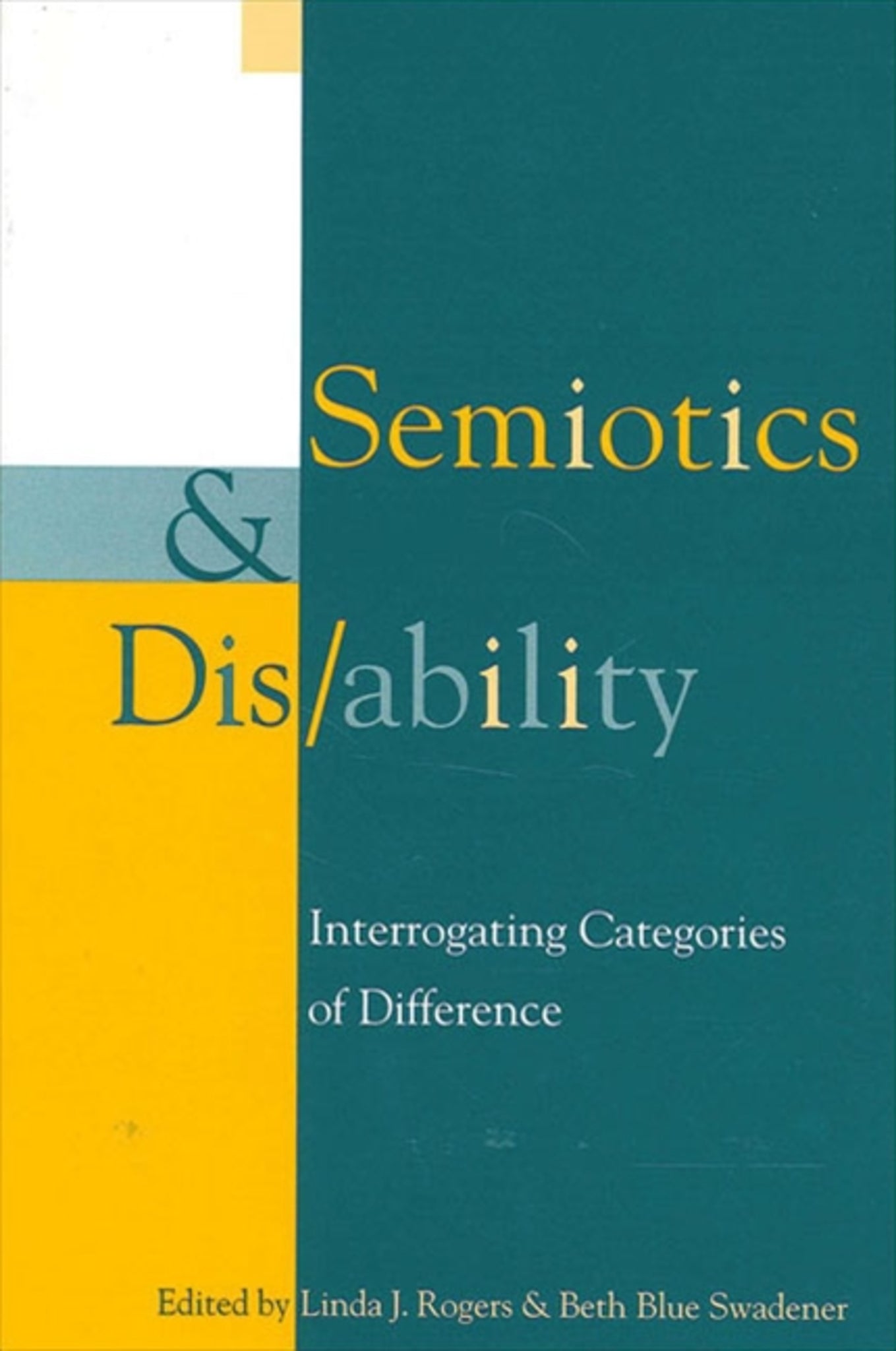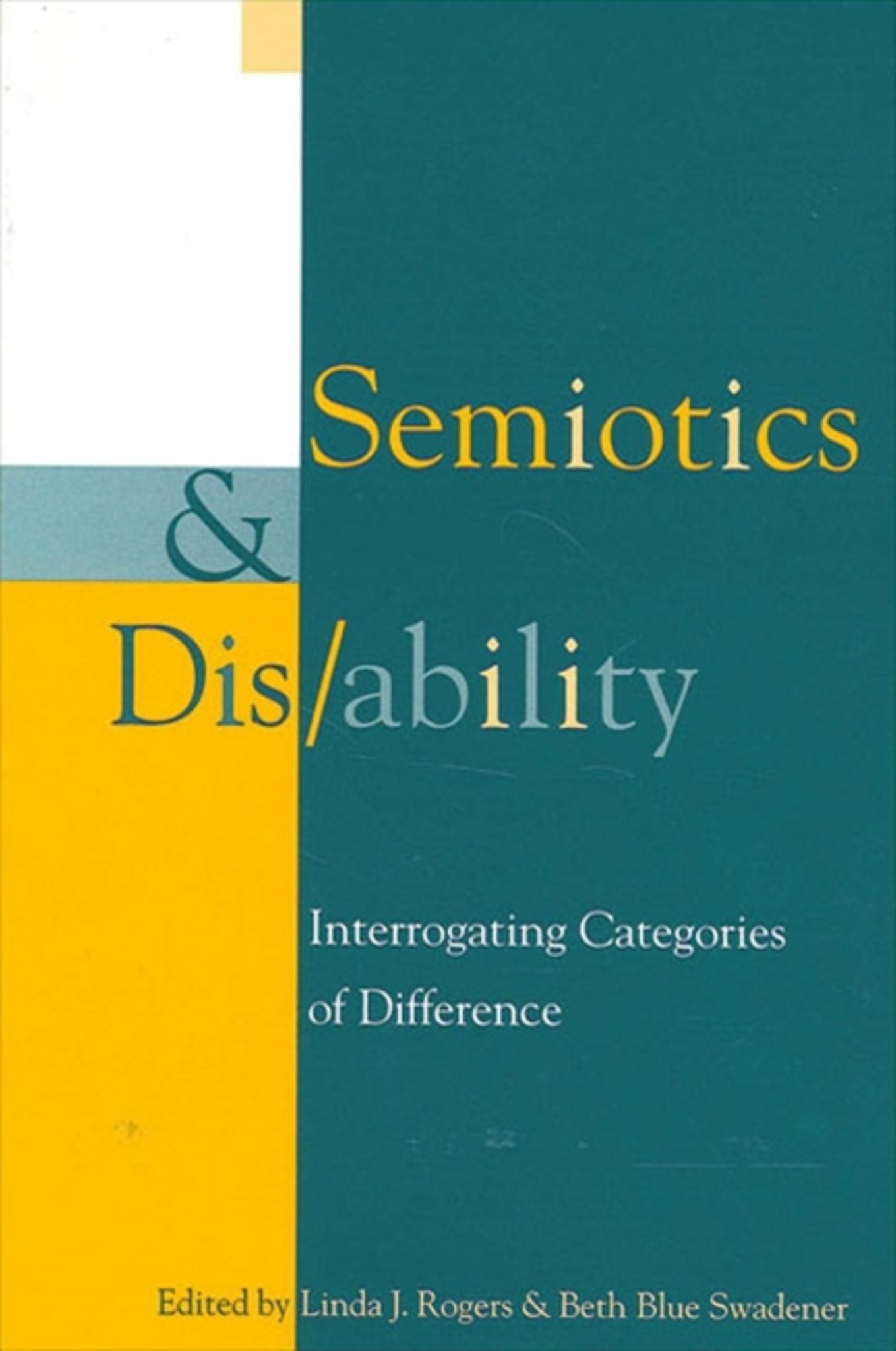We're sorry. An error has occurred
Please cancel or retry.
Semiotics and Dis/ability

Some error occured while loading the Quick View. Please close the Quick View and try reloading the page.
Couldn't load pickup availability
- Format:
-
29 March 2001

Examines the ways that the labels "disability" and "difference" are socially and culturally constructed.
This book brings together a unique collection of personal narratives and summaries of studies that problematize existing meanings of "disability" and "difference." Using applied semiotics as an analytical lens, the contributors examine the ways that these labels are socially and culturally constructed. Contributors include anthropologists, teacher educators, special educators, disability studies scholars, educational psychologists, American Sign Language instructors, semioticians, school psychologists, linguists, and parents. Each author was asked to examine his or her experience(s) and consider the "markers" of lives that are considered different.


"I have to confess that even a grizzled old veteran like me was thoroughly engaged in these stories and wished for more." — Donald J. Cunningham, Indiana University, Bloomington
Acknowledgments
Introduction
Linda J. Rogers and Beth Blue Swadener
PART I. Theoretical and Cultural Framing
1. Engaging Anthropology in Disability Studies
Devva Kasnitz and Russell P. Shuttleworth
2. Searching for the Cure: Virtual Disability and Collective Action in an Electronic Support Group
Gerald Gold
3. View From the Ivory Tower: Academics Constructing Disability
Robin M. Smith
4. Symbolic Contexts, Embodied Sensitivities, and the Lived Experience of Sexually Relevant Interpersonal Encounters for a Man with Severe Cerebral Palsy
Russell P. Shuttleworth
Shareholder Commentary
John C. Rossiter
PART II. Personal Narratives of Confronting Disability: Insider/Outsider Embedding and Disembedding
5. Semiotics of Accessibility and the Culture of Disability
N. Kagendo Mutua
6. A Mother's Construction of the Semiotic Self
Nancy Stockall
7. Advocating for Full Inclusion: Mother's Narratives
Asha Saini
Shareholder Commentary
Mara Sapon-Shevin
PART III. The Semiosis of Engagement: At/In/About and With
8. Personal Assistance Service and Youth in Transition
Marissa Nicole Shaw
9. Both Emic and Etic: A View of the World Through the Lens of the Ugly Duckling
Robertta Thoryk, Patricia Roberts, and Angela M. Battistone
10. The Miller Method: An Early Intervention Program to Help Young Children with Autism Make Meaning in Their Lives
Christine E. Cook
11. The Meaning of Disability for Grandparents of Young Children with Special Needs
Elizabeth Lane Brennan and Philip L. Safford
Shareholder Commentary
Tim P. Karash
Epilogue: After and Into the Narrative Frame
Linda J. Rogers, Beth Blue Swadener, and Tembinkosi Nyangiwe
End Notes: Semiotically Digesting Dis/ability
Floyd Merrell and Myrdene Anderson
Contributors
Index



